Numerical Modeling of Fire Resistance Test as a Tool to Design Lightweight Marine Fire Doors: A Preliminary Study
Abstract
1. Introduction
2. Materials and Methods
2.1. Numerical Modeling of the Fire Resistance Test
2.1.1. Fire-Proof Door Characteristics and Test Conditions
2.1.2. FEM Modeling
2.2. Material Properties
3. Results
3.1. Steady-State vs. Unsteady-State Thermal Analysis
3.2. Effect of Thermal Bridge
3.3. Thermo-Resistance Numerical Simulation of a Thinner and Lighter Fire Door
4. Discussion
5. Conclusions
Author Contributions
Funding
Acknowledgments
Conflicts of Interest
References
- International Code for Application of Fire Test Procedures (FTP Code); Annex 1, Part 3; International Maritime Organization (IMO): London, UK, 2010.
- International Convention for the Safety of Life at Sea (SOLAS); Chapter II-2; International Maritime Organization (IMO): London, UK, 2012.
- Capote, J.A.; Alvear, D.; Abreu, O.; Lazaro, M.; Boffill, Y.; Manzanares, A.; Maamar, M. Assessment of physical phenomena associated to fire doors during standard tests. Fire Technol. 2013, 49, 357–378. [Google Scholar] [CrossRef]
- Altin, M. Determining behaviors of fire doors with thermal camera and traditional methods comparatively. Energy Educ. Sci. Technol. Part Energy Sci. Res. 2012, 30, 465–474. [Google Scholar]
- Prieler, R.; Mayrhofer, M.; Eichhorn-Gruber, M.; Schwabegger, G.; Hochenauer, C. Development of a numerical approach based on coupled CFD/FEM analysis for virtual fire resistance tests—Part A: Thermal analysis of the gas phase combustion and different test specimens. Fire Mater. 2019, 43, 34–50. [Google Scholar] [CrossRef]
- Boscariol, P.; De Bona, F.; Gasparetto, A.; Moro, L. Thermo-mechanical analysis of a fire door for naval applications. J. Fire Sci. 2015, 33, 142–156. [Google Scholar] [CrossRef]
- Tabaddor, M.; Gandhi, P.D.; Jones, G. Thermo-mechanical analysis of fire doors subjected to a fire endurance test. J. Fire Prot. Eng. 2009, 19, 51–71. [Google Scholar] [CrossRef]
- Hugi, E.; Wakili, K.G.; Wullschleger, L. Measured and calculated temperature evolution on the room side of a butted steel door frame subjected to the standard fire of ISO 834. Fire Saf. J. 2009, 44, 808–812. [Google Scholar] [CrossRef]
- Izydorczyk, D.; Sȩdłak, B.; Papis, B.; Turkowski, P. Doors with specific fire resistance class. Procedia Eng. 2017, 172, 417–425. [Google Scholar] [CrossRef]
- Kong, H.-S.; Park, S.-H.; Park, G.-H. Development of a fire door and a fire door frame optimized for prevention of expansion of fire. J. Eng. Appl. Sci. 2017, 12, 888–893. [Google Scholar] [CrossRef]
- Moro, L.; Boscariol, P.; De Bona, F.; Gasparetto, A.; Srnec Novak, J. Innovative design of fire doors: Computational modeling and experimental validation. Fire Technol. 2017, 53, 1833–1846. [Google Scholar] [CrossRef]
- Papadopoulos, A.M. State of the art in thermal insulation materials and aims for future developments. Energy Build. 2005, 37, 77–86. [Google Scholar] [CrossRef]
- Test Report no. 2005CS015100/1; Registro Navale Italiano (RINA): Genoa, Italy, 2006.
- Boscariol, P.; De Bona, F.; Alessandro, G.; Moosavi, S.A.H.K.; Moro, L. Thermal analysis of fire doors for naval applications. In Proceedings of the PRADS2013, Changwon City, Korea, 20–25 October 2013; pp. 451–456. [Google Scholar]
- Eurocode 1: Actions on Structures—Part 1–2: General Actions—Actions on Structures Exposed to Fire; European Committee for Standardization: Brussels, Belgium, 2002.
- Sadiq, H.; Wong, M.B.; Tashan, J.; Al-Mahaidi, R.; Zhao, X.-L. Determination of steel emissivity for the temperature prediction of structural steel members in fire. J. Mater. Civ. Eng. 2013, 25, 167–173. [Google Scholar] [CrossRef]
- Eurocode 3: Design of Steel Structures—Part 1–2: General rules—Structural Fire Design; European Committee for Standardization: Brussels, Belgium, 2005.
- ASTM. D1621: Standard Test Method for Compressive Properties of Rigid Cellular Plastics; ASTM International: West Conshohocken, PA, USA,, 2000. [Google Scholar]
- Theodore, L.B.; Adrienne, S.L.; Franl, P.I.; David, P.D. Fundamentals of Heat and Mass Transfer, 7th ed.; John Wiley & Sons: Hoboken, NJ, USA, 2011; ISBN 978-0-470-50197-9. [Google Scholar]
- ISO 10456: Building Materials and Products, Hygrothermal Properties, Tabulated Design Values and Procedures for Determining Declared and Design Hermal Values; International Organization for Standardization: Geneva, Switzerland, 2007.
- Frangi, A.; Schleifer, V.; Hugi, E. A new fire resistant light mineral wool. Fire Technol. 2012, 48, 733–752. [Google Scholar] [CrossRef][Green Version]
- Sjöström, J.; Jansson, R. Measuring thermal material properties for structural fire engineering. In Proceedings of the 15th International Conference on Experimental Mechanics, Porto, Portugal, 22–27 July 2012; p. 2846. [Google Scholar]
- Green, D.W.; Perry, R.H. Section 5: Heat and mass transfer. In Perry’s Chemical Engineers’ Handbook; McGraw-Hill Professional: New York, NY, USA, 2008; pp. 5-1–5-83. ISBN 0-07-154212-4. [Google Scholar]
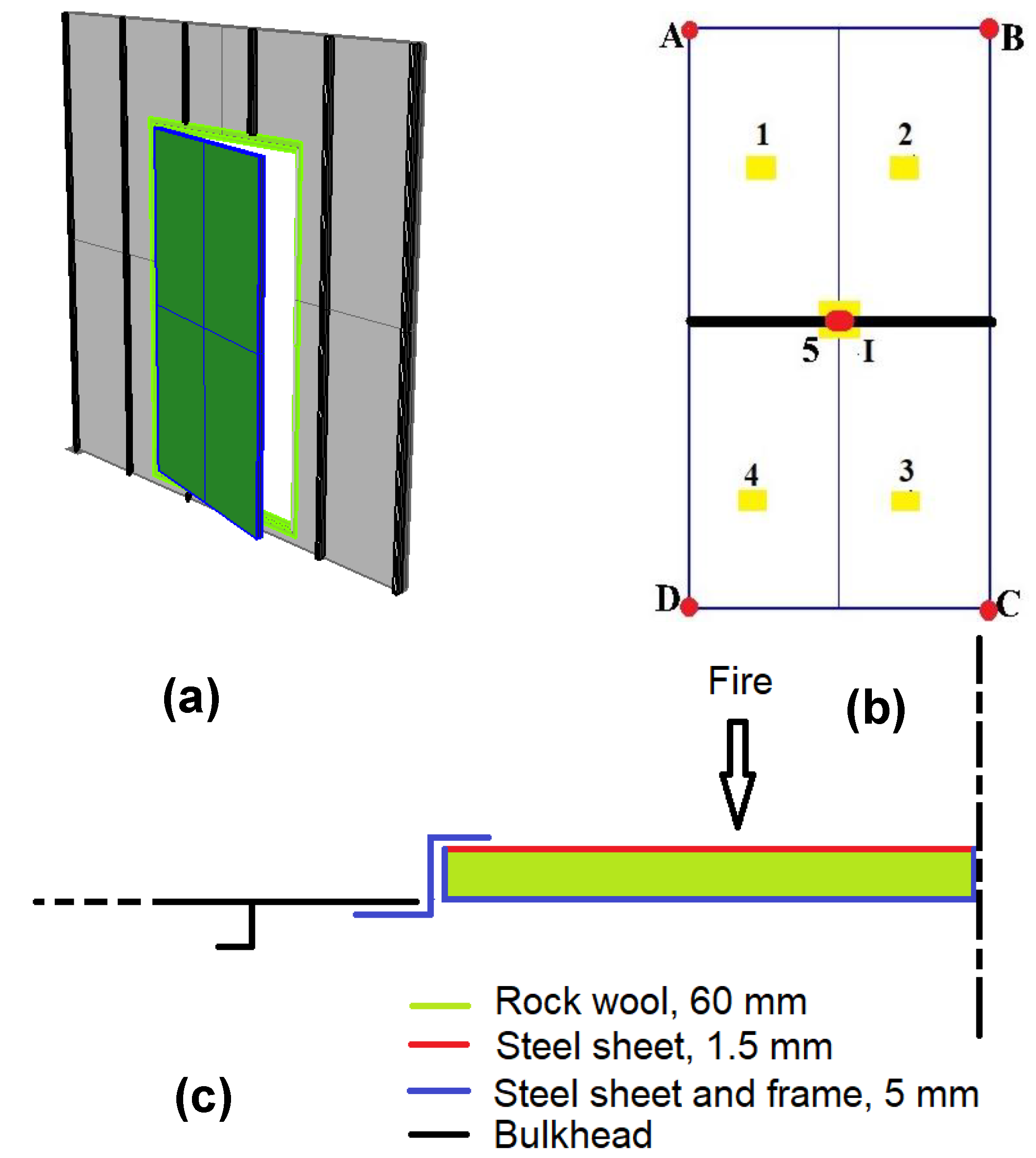
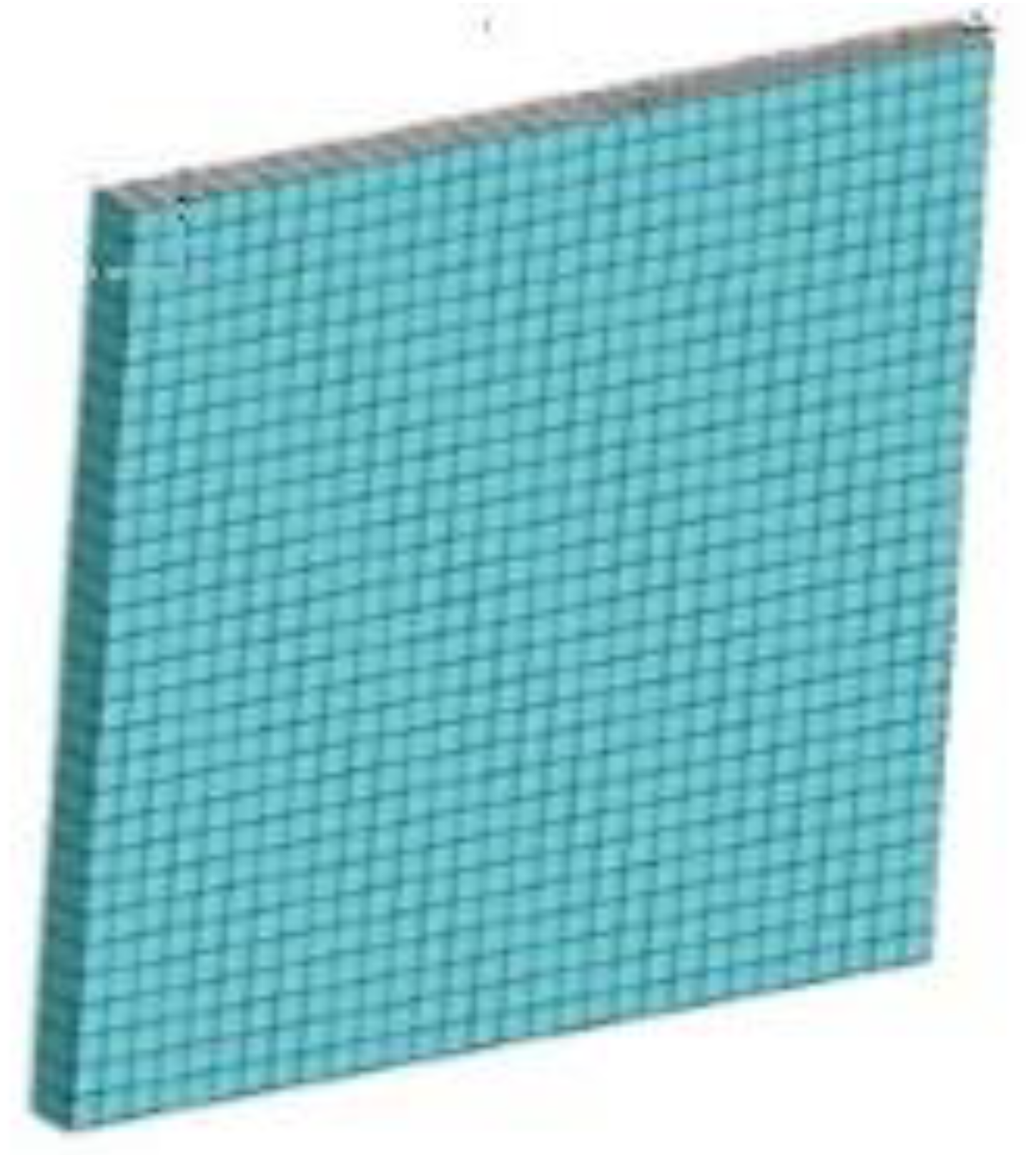
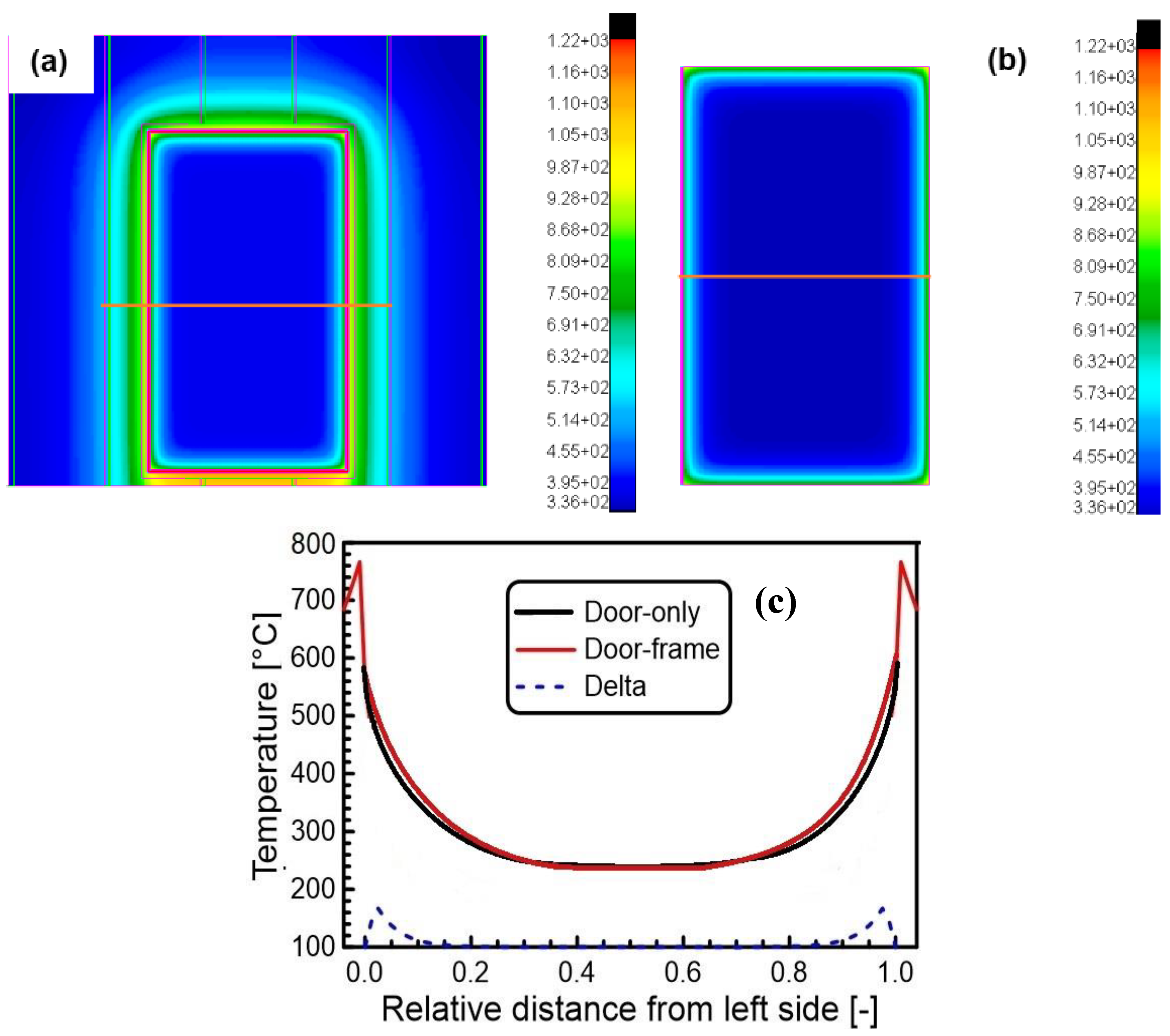
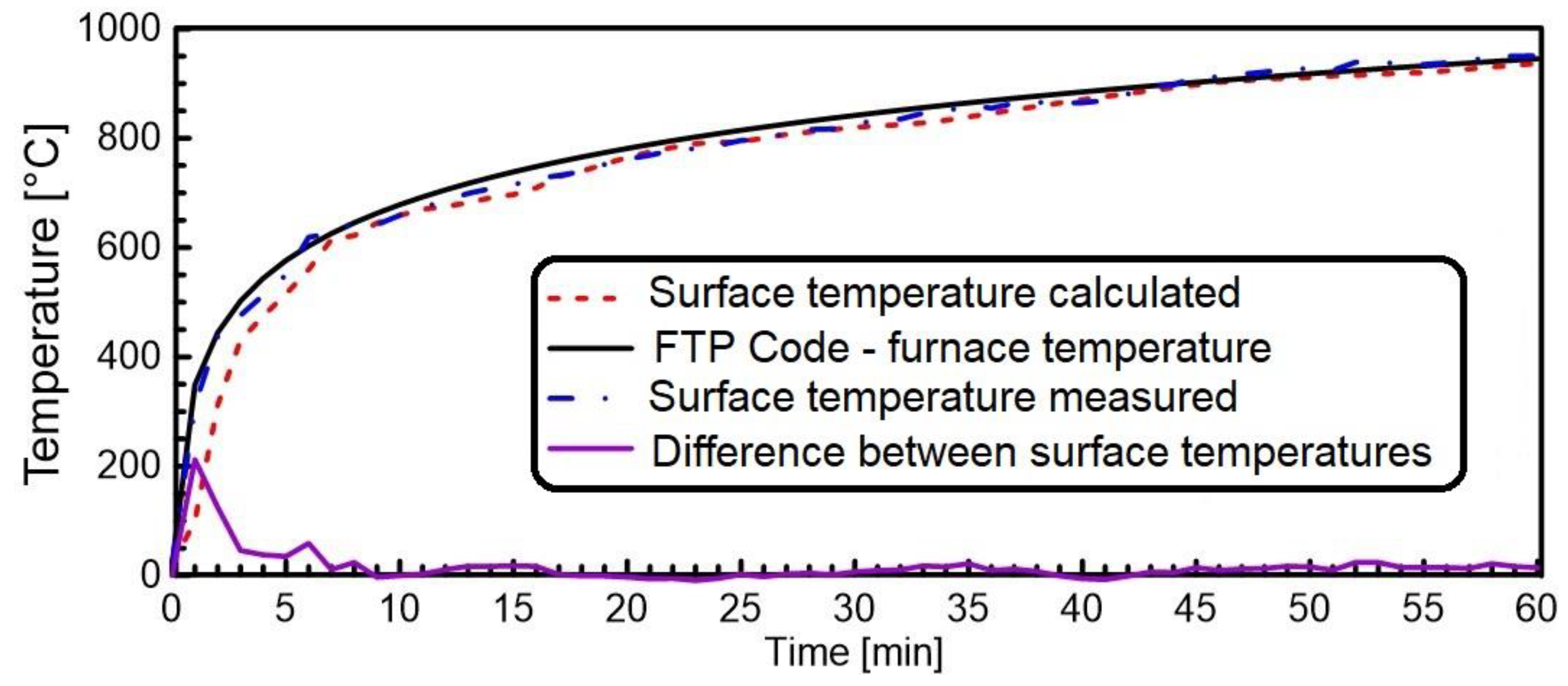
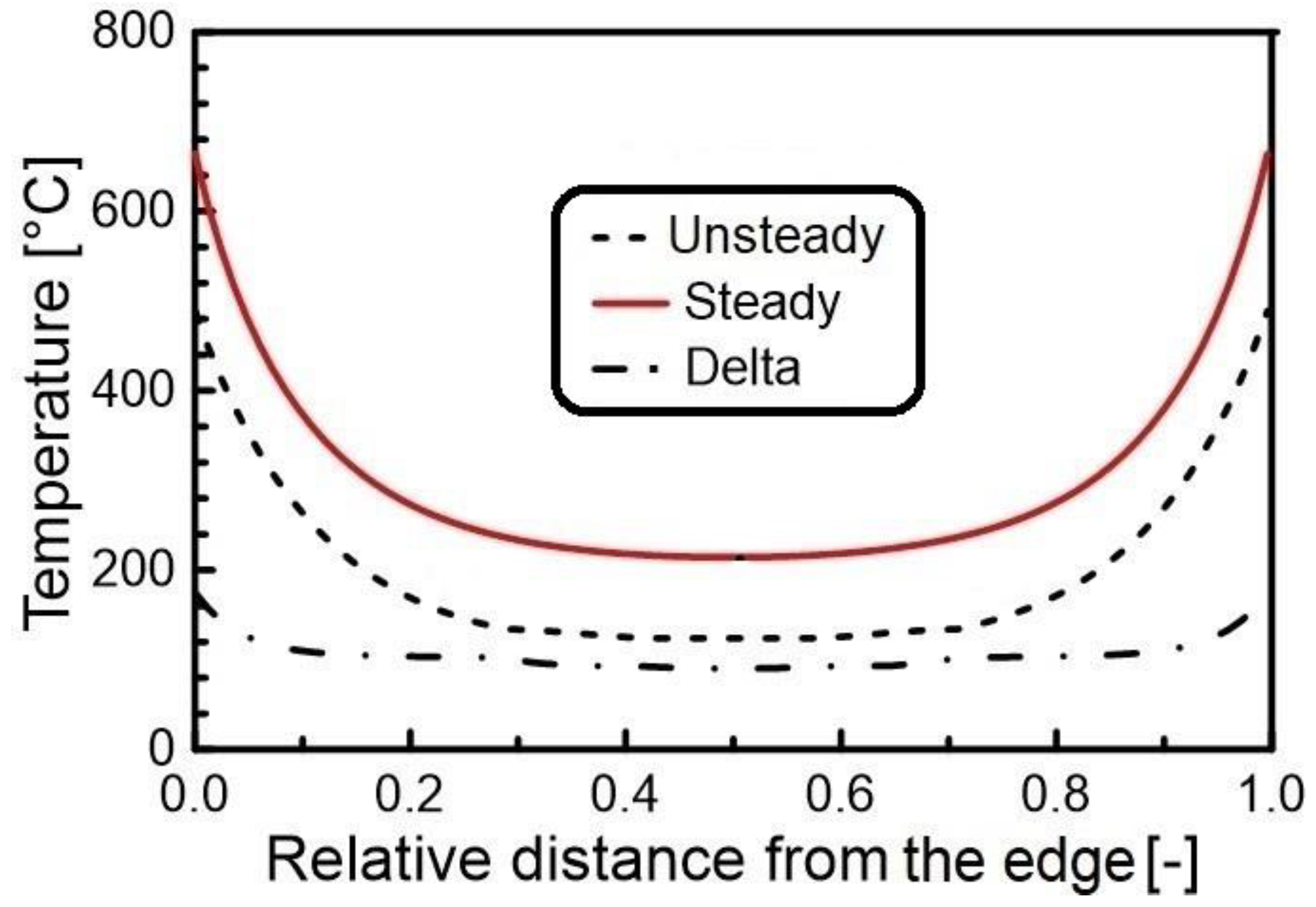
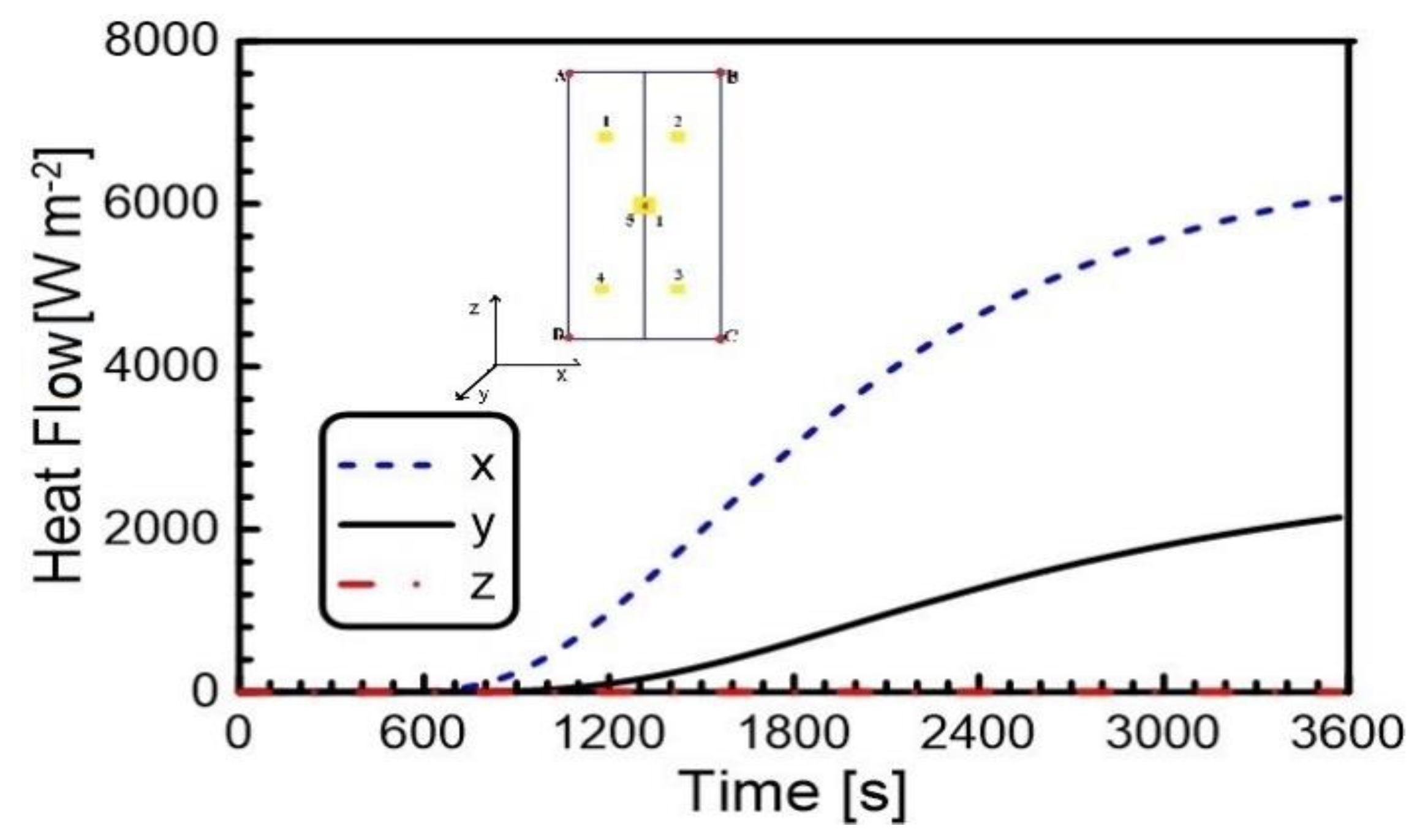
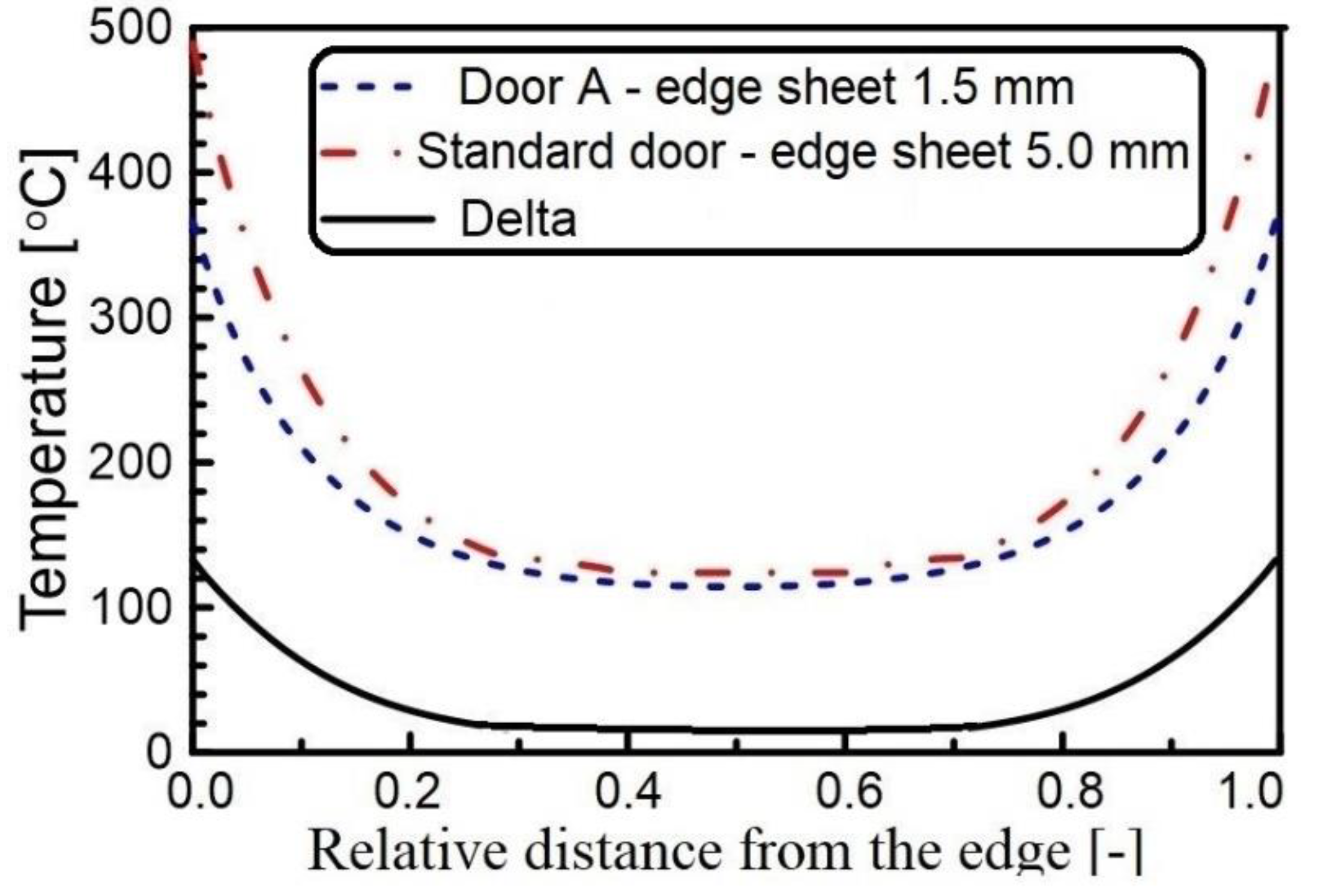

| Material | Young’s Modulus E (GPa) | Poisson’s Ratio ν (-) | Density ρ (kg m−3) | Thermal Conductivity k (W (m K)−1) | Thickness (mm) |
|---|---|---|---|---|---|
| Carbon steel | 190 | 0.3 | 7800 | 27.29 | 5.0–1.5 |
| Rock wool | 4 × 10−6 | 0 | 180 | 0.035 | 60 |
| Point | T Steady Model (°C) | T Unsteady Model (°C) | T Measured * (°C) |
|---|---|---|---|
| 1 | 248 | 146 | 149 |
| 2 | 248 | 146 | 145 |
| 5 | 214 | 124 | 127 |
| 3 | 248 | 146 | 140 |
| 4 | 248 | 146 | 146 |
| Point | d Model (mm) | d Measured * (mm) |
|---|---|---|
| A | 1.0 | 2.0 |
| B | 4.5 | 13.0 |
| C | 4.5 | 3.0 |
| D | 1.0 | 2.0 |
| Point | Door A (°C) | Door B (°C) |
|---|---|---|
| 1 | 139 | 148 |
| 2 | 139 | 148 |
| 5 | 119 | 147 |
| 3 | 139 | 148 |
| 4 | 139 | 148 |
© 2020 by the authors. Licensee MDPI, Basel, Switzerland. This article is an open access article distributed under the terms and conditions of the Creative Commons Attribution (CC BY) license (http://creativecommons.org/licenses/by/4.0/).
Share and Cite
Kyaw Oo D’Amore, G.; Marinò, A.; Kašpar, J. Numerical Modeling of Fire Resistance Test as a Tool to Design Lightweight Marine Fire Doors: A Preliminary Study. J. Mar. Sci. Eng. 2020, 8, 520. https://doi.org/10.3390/jmse8070520
Kyaw Oo D’Amore G, Marinò A, Kašpar J. Numerical Modeling of Fire Resistance Test as a Tool to Design Lightweight Marine Fire Doors: A Preliminary Study. Journal of Marine Science and Engineering. 2020; 8(7):520. https://doi.org/10.3390/jmse8070520
Chicago/Turabian StyleKyaw Oo D’Amore, Giada, Alberto Marinò, and Jan Kašpar. 2020. "Numerical Modeling of Fire Resistance Test as a Tool to Design Lightweight Marine Fire Doors: A Preliminary Study" Journal of Marine Science and Engineering 8, no. 7: 520. https://doi.org/10.3390/jmse8070520
APA StyleKyaw Oo D’Amore, G., Marinò, A., & Kašpar, J. (2020). Numerical Modeling of Fire Resistance Test as a Tool to Design Lightweight Marine Fire Doors: A Preliminary Study. Journal of Marine Science and Engineering, 8(7), 520. https://doi.org/10.3390/jmse8070520






